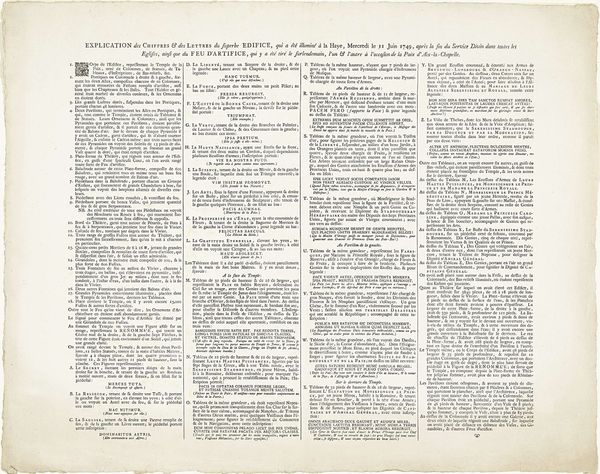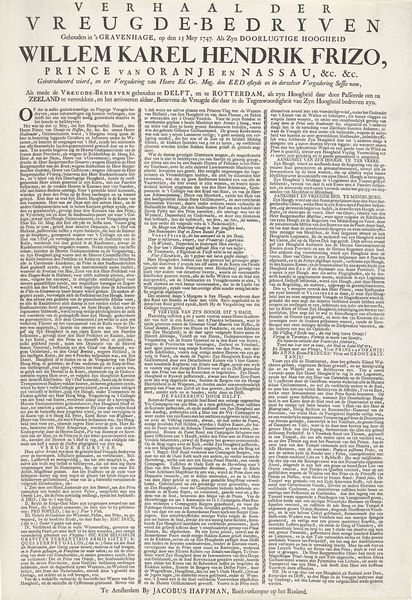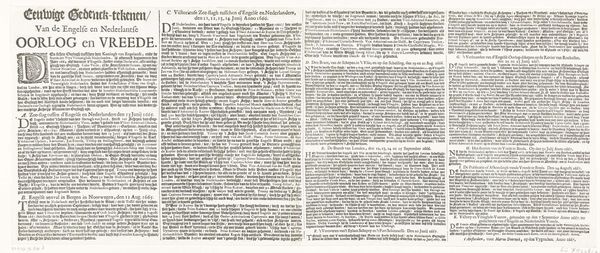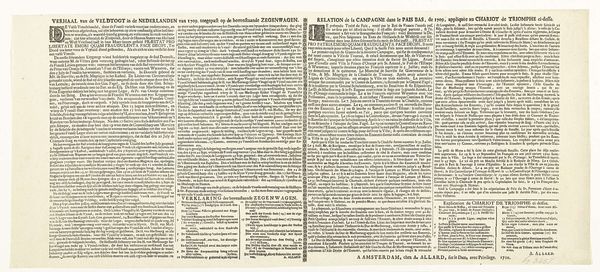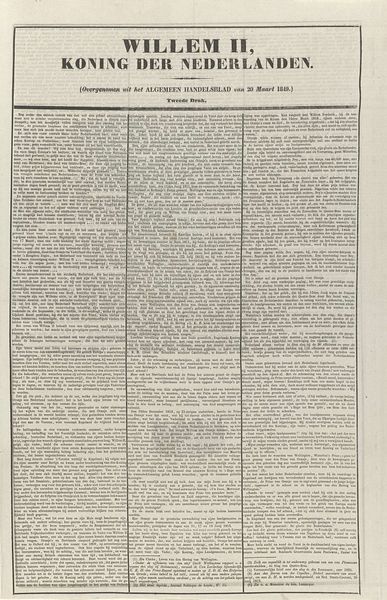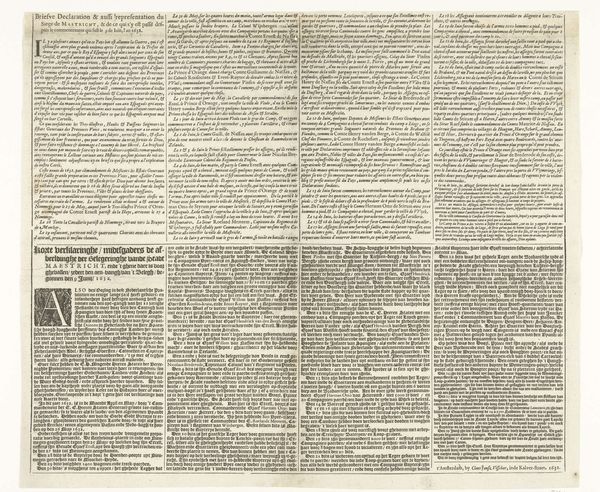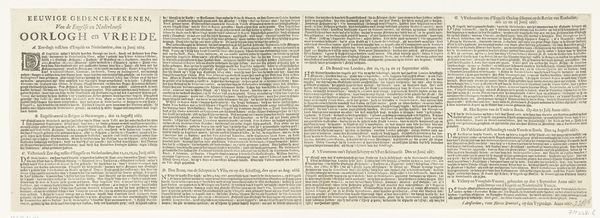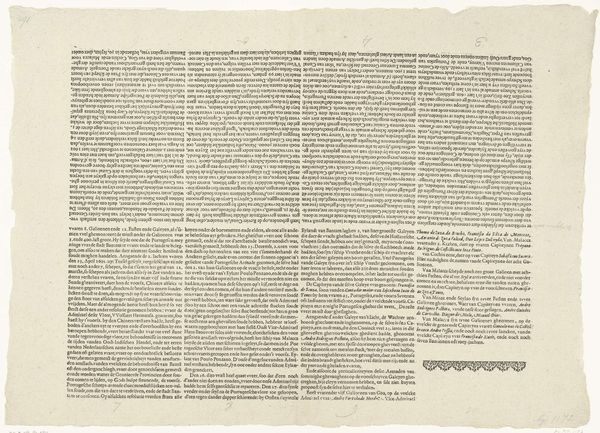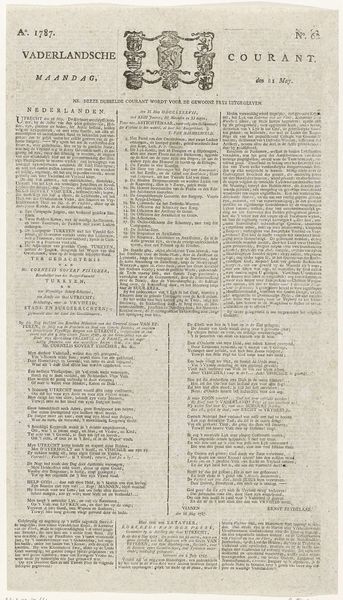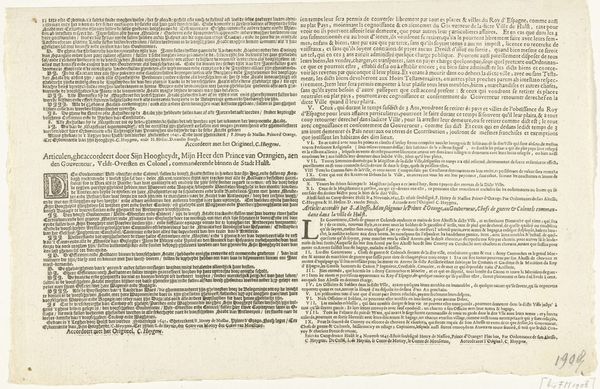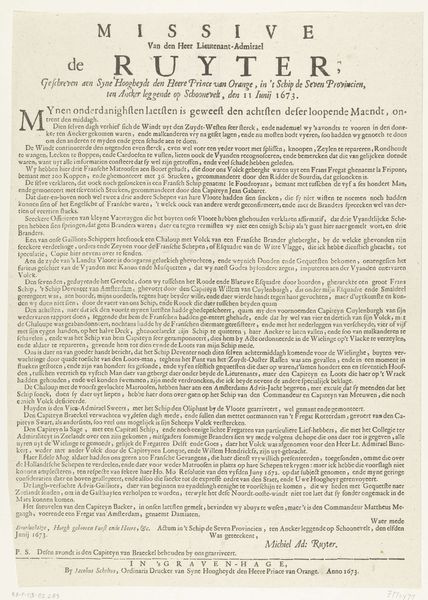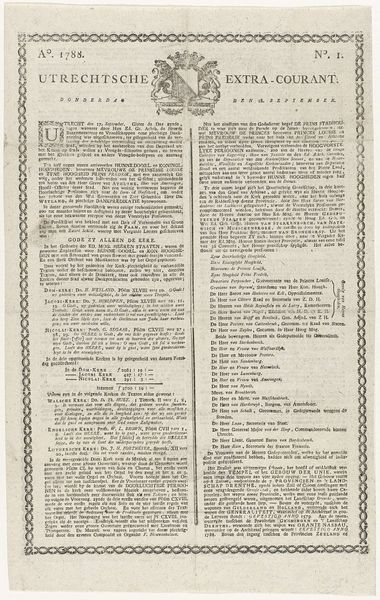
Verklaring bij de prenten van het vuurwerk te Den Haag voor de Vrede van Aken, 1749 1749
0:00
0:00
# print
Dimensions: height 399 mm, width 480 mm
Copyright: Rijks Museum: Open Domain
Curator: Here, we have "Verklaring bij de prenten van het vuurwerk te Den Haag voor de Vrede van Aken, 1749", a print created in 1749 by Anthoni de Groot en Zoonen, currently held in the Rijksmuseum. The piece documents and describes the fireworks display in The Hague celebrating the Treaty of Aachen. Editor: Immediately, the overwhelming impression is that of text, tightly packed. It almost appears to be some form of regulatory documentation instead of memorializing public fireworks. How was it even printed in such minute detail? Curator: Consider the broader context of commemorative prints in the 18th century. While celebrating a political agreement, this print reinforces hierarchies. It uses textual authority to mediate lived experiences. The descriptions themselves are meticulously crafted to impress on the audience the significance of peace. Editor: Absolutely. But let's get into the production; etching enabled this incredibly detailed replication. We are looking at techniques deeply entrenched in craft and labor. The meticulous process involved, from the original design of the fireworks, to the painstaking replication of them and their written accompaniment as a mass produced object meant for consumption. What inks were used? How many artisans worked on this project? It's crucial. Curator: Certainly, understanding the materials and labour is fundamental. Simultaneously, we have to think of the viewing context: who had access to it, what it tells us about the social conditions surrounding its reception, and also the intention behind the chosen subject to immortalize on print? Its presence underscores complex negotiations between public spectacle and official power. Editor: Indeed, the convergence of celebration and administration, the artistry and the toil…all essential for grasping how images of power materialize—literally—into historical documents like this. Thank you, as ever. Curator: And to you. Considering the print both as celebration and statement is important to understand how these objects both participate and comment upon historicized moments of peace.
Comments
No comments
Be the first to comment and join the conversation on the ultimate creative platform.
